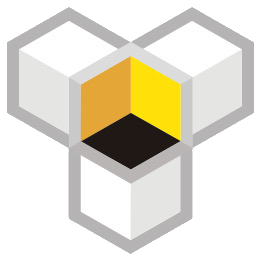2024年 استخدام مزايا Sass في بناء الموقع
في هذا العصر الرقمي، يعتبر موقع الويب النشط أمرًا مهمًا للغاية للشركات والأفراد على حد سواء. إن إنشاء موقع مستقل هو خيار جيد جدًا، ولكن التحول إلى إنشاء مواقع ساس يمكن أن يعطي نجاحًا أكثر سهولة. يتمتع ساس بميزات فريدة تجعله يحظى بتفضيل كبير من قبل المطورين. ستتناول هذه المقالة مزايا استخدام ساس في إنشاء المواقع لعام 2024 من عدة جوانب.
1. إعادة استخدام الشفرة وتجزئتها
تسمح ساس للمطورين بتقسيم الأنماط إلى وحدات أصغر وتجميعها معًا باستخدام تعليمة @import. يمكن بذلك تحقيق إعادة استخدام الشفرة وتقليل التكرار وزيادة صيانة الشفرة. بالإضافة إلى ذلك، يدعم ساس أيضًا الماكرو المزج (mixin) والدوال (function)، مما يتيح للمطورين كتابة مقاطع شفرة قابلة لإعادة الاستخدام وبالتالي يعزز كفاءة التطوير.
2. قوة الوظائف
Sass provides many advanced features such as variables, nesting, conditional statements, loops, etc. These features allow developers to write CSS code more flexibly. For example, by using variables, developers can easily modify properties like colors and fonts without having to modify code in multiple places. In addition, Sass supports selector nesting, which allows developers to better control the scope of styles.
3. Easy maintenance
Due to Sass breaking down CSS code into smaller modules, it makes the code clearer and easier to understand, making it easier to maintain. Additionally, Sass provides rich comment functionality, allowing developers to add comments in the code to help other developers understand the functionality and logic of the code. Furthermore, Sass can compile into browser-compatible CSS code, which means developers can use the latest Sass syntax for development without worrying about browser compatibility issues.
4. Improved development efficiency
Sass provides many convenient features such as auto-completion, syntax highlighting, and syntax checking, which can help developers write code faster and reduce errors. In addition, Sass also supports real-time preview function, allowing developers to see the effect while writing code, greatly improving development efficiency.
5. Community Support
Sass has a large community of developers, which means that developers can easily find various resources about Sass, such as tutorials, plugins, templates, etc. In addition, Sass integrates well with other front-end frameworks such as Bootstrap, Foundation, etc., making it easier for developers to use these frameworks for development.
6. Cross-platform compatibility
Sass can not only run on web servers, but also on various operating systems such as Windows, macOS, Linux, etc. This means that developers can use Sass for development on any platform, increasing development flexibility.
7. Version Control
Sass compatible with Git version control system, which means that developers can use Git to version control Sass code. Through version control, developers can easily roll back to previous versions for troubleshooting. Additionally, version control can help developers better manage code changes and improve development efficiency.
8. Integration with other tools
Sass can integrate with many other front-end tools, such as JavaScript build tools (such as Webpack, Gulp, etc.), package managers (such as npm, Yarn, etc.), task runners (such as Grunt, Gulp, etc.), and more. This means that developers can use these tools for automated build, testing, deployment, and other operations, improving development efficiency.
Conclusion
Using Sass for website development in 2024 has many advantages, including code reusability and modularity, powerful features, easy maintenance, improved development efficiency, community support, cross-platform compatibility, version control, and integration with other tools. These advantages make Sass the preferred website development technology for more and more developers.

